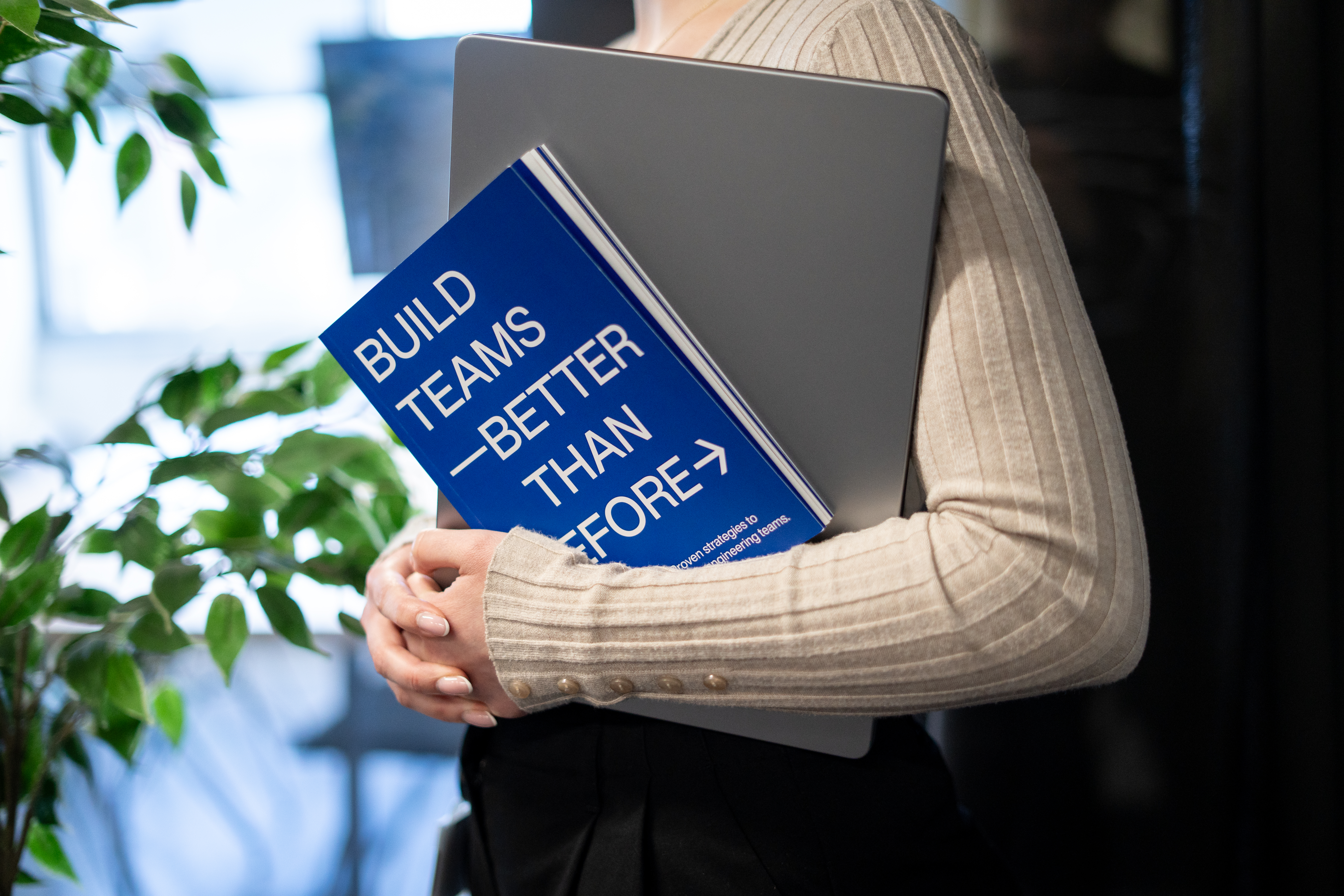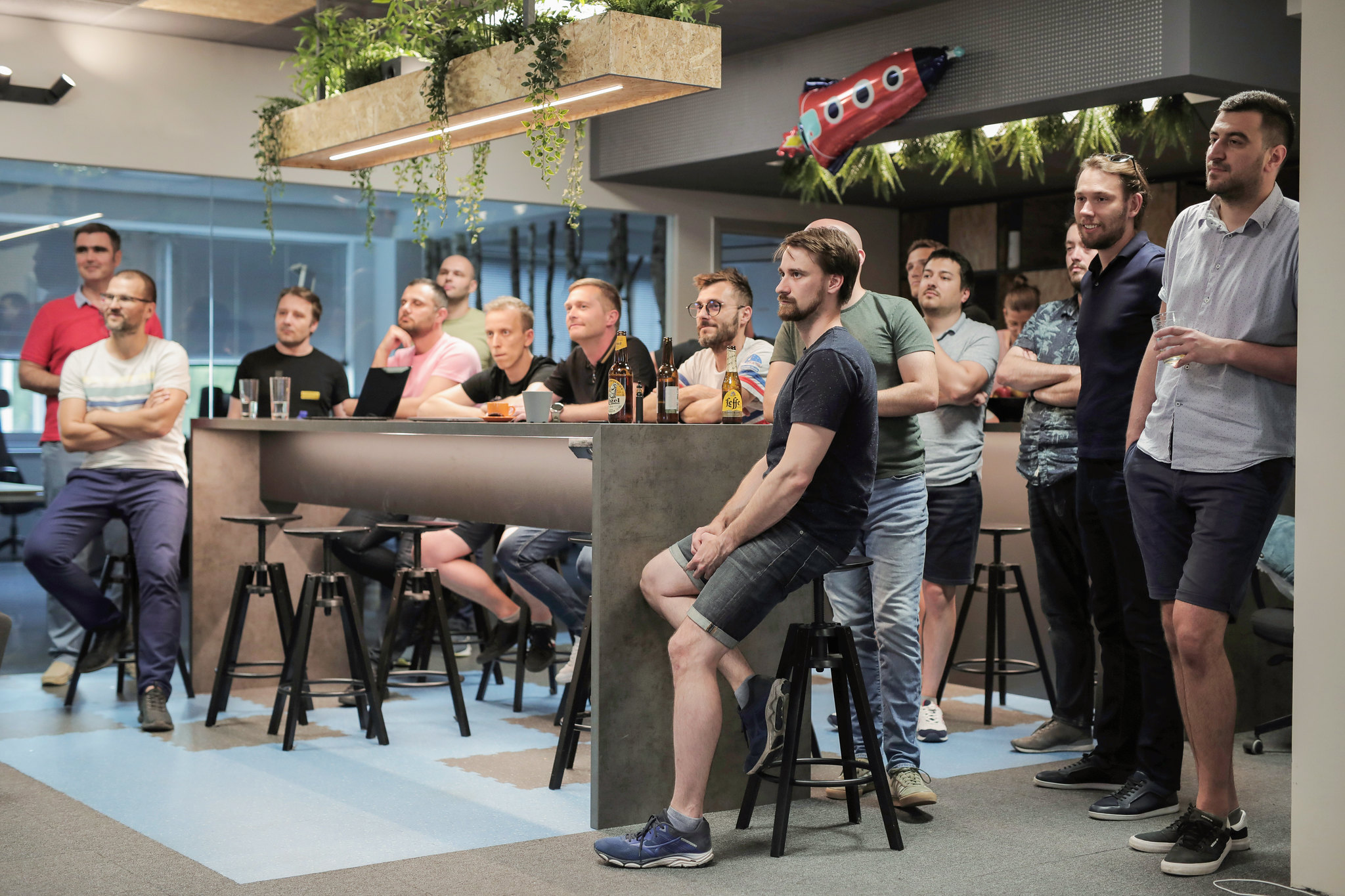Building software through a build-operate-transfer (BOT) model is different from traditional outsourcing.
You’re setting up a long-term partnership that shapes how your product grows, how your team works, and how fast you reach new markets.
It’s easy to think BOT is just another way to build a team.
But without the right structure, it quickly turns into chaos and wasted investment.
In this article, we’ll share 6 key best practices for successful BOT partnerships and show you how to avoid that chaos.
Let’s dive in!
Key takeaways:
- Set measurable goals from day one. Define what success looks like early so you can track progress and adjust before problems grow.
- Hire carefully and structure clearly. Bring in people who fit how you work, document responsibilities, and be clear about who decides what.
- Build infrastructure your team can own. Start simple, automate early, and use tools you’re already familiar with.
Set clear goals and success metrics
Your BOT project needs measurable goals before anyone writes a single line of code.
Vague ambitions like “increase delivery speed” or “build a local team” don’t help you make decisions or measure real impact.
Define what success means from both a business and delivery perspective.
Every metric you track should tell you whether you’re moving closer to a sustainable, independent operation, not just if you’re hitting technical milestones.
Here are some of the key metrics worth tracking:
- Time to first production release – Measures how quickly your team can move from setup to delivering real value.
- Hiring and onboarding speed – Tracks how efficiently the local team is being built and integrated into your workflow.
- Team retention rate – Indicates how well your culture and management practices are working locally.
- Sprint velocity and release frequency – Show whether delivery capacity is increasing and stable over time.
- Defect escape rate – Highlights the percentage of issues found after release, helping you monitor code quality.
- Operational independence score – Measures how many processes the internal team can run without vendor support.
- Cost efficiency – Compares delivery cost per engineer or per feature against your original projections.
- Stakeholder satisfaction – Combines feedback from both internal and external teams to gauge alignment and communication quality.
Finally, the key is to make all of these metrics visible.
Track them in quarterly reviews with all stakeholders to flag issues early and stay on the same page about if the BOT model is actually delivering long-term value.
With clear goals and measurable success criteria, your BOT project becomes easier to manage, evaluate, and scale.
And when everyone understands what progress looks like, you can make faster decisions and prove real business impact.
Set up scalable infrastructure
The infrastructure your BOT partner sets up at the start will shape how your BOT project performs years down the line.
They need to set up infrastructure that’s stable, scalable, and easy to take over once the transfer phase begins.
A strong infrastructure will give you room to grow and scale. A weak one will slow you down and make scaling infinitely harder.
Make sure they start simple. A modular monolith is the right first step, as it’s easier to build, test, and hand over.
As your team and BOT project matures, they can transition to microservices for more flexibility. But that shift should be driven by real needs, not just because they’re popular.
Here’s what your BOT team should focus on:
- Automation – Building reliable CI/CD pipelines with tools like Jenkins, GitHub Actions, or GitLab CI to handle testing, integration, and deployment without manual steps.
- Monitoring – Using tools like Prometheus, Grafana, or Datadog to track performance and catch issues before they hit users.
- Security – Embedding access controls, audit trails, and data encryption from day one.
- Documentation – Keeping infrastructure and DevOps playbooks updated for easy handover later.
- Flexibility – Using open-source, modular tools to avoid vendor lock-in and simplify future upgrades.
Work with your BOT partner and choose technologies that fit your long-term goals and your team’s actual skill set.
Avoid frameworks the team can’t maintain after transfer.
Make sure they prioritize open-source, well-supported, and modular tools to minimize friction during knowledge transfer.
Finally, involve engineers, product managers, and operations teams from both sides early in planning.
Their input will help you find security gaps, scalability limits, and maintenance risks before they turn into costly errors.
Plan for transfer from the start
Successful BOT projects start planning for the transfer phase from day one.
Planning for it from the start keeps ownership clear and your operation running without interruption.
Your BOT agreement should define how ownership, responsibilities, and support change across the different phases. Make sure to include:
- Statement of Work (SoW) – Defines deliverables, scope, and timelines.
- IP rights agreement – Defines how ownership of code, tools, and documentation transfers at each stage of the project.
- Data protection and security agreement – Ensures compliance with relevant regulations.
- Team transfer agreement – Covers employee contracts, benefits, and continuity terms.
Create a transfer readiness framework that covers operational maturity, technical infrastructure, and knowledge transfer.
Operational readiness means documented processes that teams can follow independently. No one should be the single point of failure.
Technical readiness means your cloud setup, CI/CD pipelines, and monitoring tools meet operational standards. Fix security, scalability, or integration gaps early.
To make sure the team is ready, hold quarterly readiness reviews.
Involve stakeholders from both sides, measure progress against defined criteria, and document what’s working and what’s not.
This will help you keep everyone on the same page and prevent last-minute surprises.
When both sides know exactly how the transfer will happen, you get a predictable, low-friction handover that sets your new team up for success.
Clearly define the team structure
Building the right team makes everything else in your BOT project easier.
Poor hiring decisions create technical debt and knowledge gaps that persist long after transfer.
Strong BOT teams usually share these traits:
- Defined roles and responsibilities – Everyone knows their scope, authority, and reporting line.
- Cross-functional composition – Product Owners bridge business goals, while development teams mix engineers, QA, designers, and DevOps.
- Leadership alignment – Technical leads or coordinators connect the vendor and client sides to keep priorities synchronized.
- Balanced skill sets – Combine specialists for depth and generalists for flexibility; the ratio evolves as the project matures
Choose a BOT partner with strong local hiring experience and a solid track record in building and scaling software teams.
Their hiring process should be transparent and data-driven. Make sure they have the chops to handle quick hiring and scaling without sacrificing quality.
Make sure to set clear hiring criteria you expect them to hit.
Technical ability matters, but so do communication, adaptability, and cultural fit. You want people who share your standards for quality and ownership.
Also, invest in onboarding. From day one, new team members should understand your product, your processes, and your goals.
And keep the team structure clear. Define roles, decision authority, and escalation paths in writing. In distributed teams, knowing who does what keeps work moving and makes transfer easier.
Prioritize knowledge transfer and open communication
Start documenting from day one.
Record architectural decisions, system designs, deployment steps, troubleshooting guides, and key lessons learned.
Good documentation isn’t red tape. It’s key when you need to onboard new team members.
And make sure to keep everything in one place.
Use shared, searchable tools like Confluence or Notion so everyone can access and update information easily. Assign owners to keep documentation current.
Plan knowledge transfer in stages.
- Build phase: capture architecture, tech stack choices, and main workflows.
- Operate phase: document implementation details, edge cases, and daily operations.
- Pre-transfer: run shadowing sessions and dry runs where your team manages real tasks with less vendor support.
Clear and open communication are key to success here.
BOT projects span different teams, time zones, and cultures, and without structure, key information can quickly disappear.
Set clear communication rules and stick to them.
Define how you will collaborate and which tools everyone should use:
- Chat and team communication – Slack or Microsoft Teams for real-time updates and quick problem solving.
- Project management – Jira, Linear, or ClickUp for tracking work and delivery progress.
- Documentation and knowledge sharing – Confluence or Notion for system records, guides, and processes.
- Video and collaboration – Google Meet, Zoom, or Loom for discussions, retrospectives, and async updates.
Set a meeting rhythm that balances teamwork and focus.
Hold weekly team syncs, regular one-on-ones, and other meetings that match your workflow.
Finally, be clear about communication etiquette.
Explain how to mark urgent issues, share updates, and raise concerns.
When people know how to communicate, they collaborate faster and solve problems sooner. And that builds trust and makes the transfer smoother.
Keep vendor support post-transfer
The transfer phase isn’t the end of the partnership.
You should plan for ongoing support that helps your team stay stable while gaining independence.
Post-transfer support gives your team a safety net in the first few months of running on their own.
You get quick access to the vendor’s expertise when questions or unexpected issues come up.
Define post-transfer support clearly in your BOT agreement. Make sure to cover:
- Technical consulting – Quick access to the vendor’s experts for technical questions questions.
- Troubleshooting assistance – Help diagnosing and resolving production issues.
- Optimization and scaling advice – Advice on performance tuning, new feature rollout, or infrastructure scaling.
- Specialist access – Short-term involvement of senior engineers or DevOps specialists for complex challenges.
Structure post-transfer support to build your team’s independence.
Start with closer vendor involvement after transfer, then scale it back as your team gets more capable.
Use service-level agreements (SLAs) to define how post-transfer support works in practice. Define response times, escalation paths, and pricing upfront.
Review them regularly to make sure the setup still fits your team’s needs.
Keep transferring knowledge throughout this phase. Every interaction with your BOT partner should make your team stronger.
When issues are solved, document the fix and explain why it worked so your engineers can handle it next time.
That’s how you turn vendor support into a bridge to full independence rather than a dependency that holds you back.
BOT best practices: FAQs
The BOT model makes the most sense for companies that want to expand for the long haul.
If you’re planning to grow in new markets, need to build long-term capability, or want more control than traditional outsourcing gives you, BOT is a strong fit.
It’s also ideal if you value owning your IP, culture, and processes from the inside.
At DECODE, we’ll build and operate your BOT team from our engineering hub in Croatia, giving you a dedicated, fully aligned team that works as an extension of your company.
You’ll stay in control while we handle setup, operations, and delivery until you’re ready to take over.
Croatia offers access to exceptional engineering talent, a strong tech ecosystem, and great cost efficiency, making it one of the best places in Europe to scale your team.
Read more here →
Most BOT engagements run for 12-24 months, depending on the size and complexity of the team you’re building. Here’s what that usually looks like:
- Build phase – We hire and onboard the initial team (3-6 months).
- Operate phase – Your team works under your direction while DECODE handles HR, payroll, and day-to-day operations (6–18 months).
- Transfer phase – You take full ownership of the team, processes, and IP.
We tailor the engagement to your goals. If you want to scale faster or grow gradually, we’ll adjust the timeline to fit your plan.
Knowledge transfer isn’t a handoff at the end – it’s baked in from day one.
Your provider builds processes around documentation, shared tools, and cross-team collaboration. They’ll run joint workshops, set up shadowing programs, and slowly shift key responsibilities to your internal leads.
Over time, the team learns how everything works: codebase, workflows, decision-making, and context.
So when it’s time to take over, nothing’s new – it’s just the next step.
Looking to build a team through BOT?
BOT isn’t a shortcut.
It takes planning, patience, and a partner who knows what they’re doing.
When it’s done right, you get a capable team, solid infrastructure, and a setup that becomes part of your company for the long run.
That’s the real value of BOT. Independence, not dependency.
And we can help you get there.
If you’re exploring whether BOT is the right fit for your business, let’s talk.
We’ll show you how the process works, what to expect, and how to make it work for your product.



